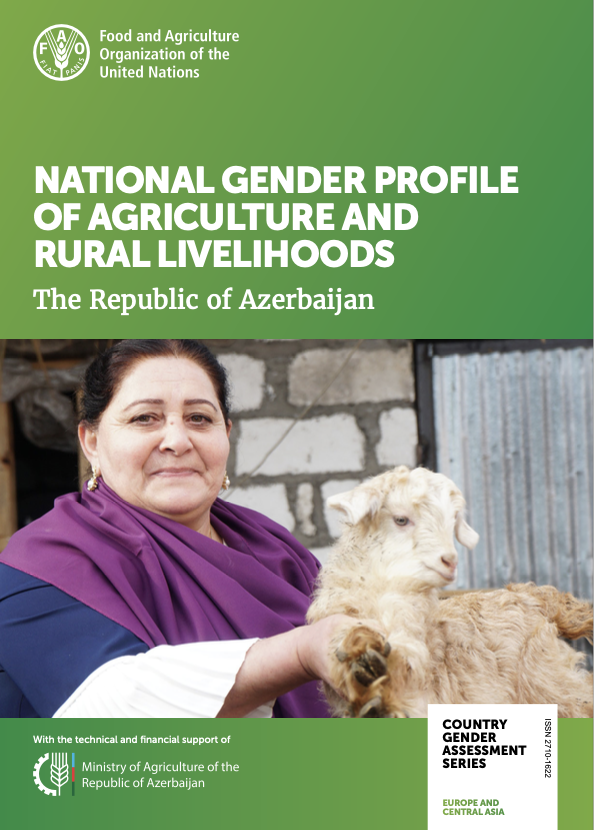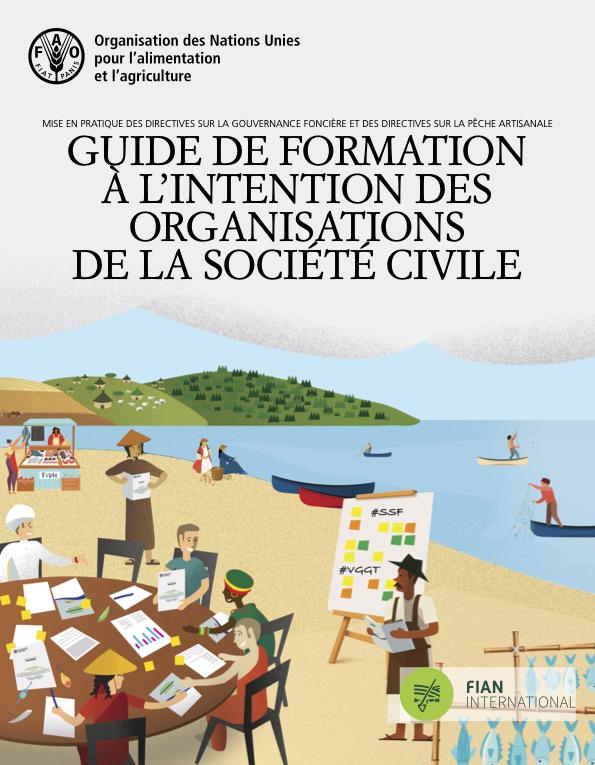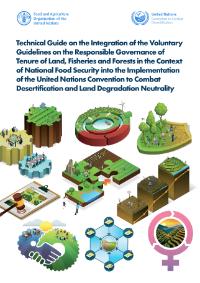Focal point
Location
The Food and Agriculture Organization of the United Nations leads international efforts to defeat hunger. Serving both developed and developing countries, FAO acts as a neutral forum where all nations meet as equals to negotiate agreements and debate policy. FAO is also a source of knowledge and information. We help developing countries and countries in transition modernize and improve agriculture, forestry and fisheries practices and ensure good nutrition for all. Since our founding in 1945, we have focused special attention on developing rural areas, home to 70 percent of the world's poor and hungry people.
Members:
Resources
Displaying 6 - 10 of 5074National gender profile of agriculture and rural livelihoods: The Republic of Azerbaijan
This country gender assessment (CGA) for the Republic of Azerbaijan was undertaken as part of FAO and national commitments to promote gender equality while integrating a gender perspective into its operations. The resulting CGA report focuses on the intersections of gender, agriculture and rural development, and presents a snapshot of critical gender-based inequalities and their consequences for agricultural production and rural livelihoods in Azerbaijan.
Mise en pratique des Directives sur la gouvernance foncière et des Directives sur la pêche artisanale
Le présent guide de formation a été élaboré en partenariat avec plusieurs divisions de l’Organisation des Nations Unies pour l’alimentation et l’agriculture (FAO) et FIAN International, et a été adapté du guide d’apprentissage Mise en pratique des Directives volontaires sur les régimes fonciers: Guide de formation à l’intention des organisations de la société civile, dans le but d’inclure les spécificités du secteur de la pêche artisanal.
Technical Guide on the Integration of the Voluntary Guidelines on the Responsible Governance of Tenure of Land, Fisheries and Forests in the Context of National Food Security into the Implementation of the United Nations Convention to Combat Desertificati
Produced jointly by the secretariats of the Food and Agriculture Organization of the United Nations (FAO) and the United Nations Convention to Combat Desertification (UNCCD), with contributions from multiple stakeholders, this technical guide addresses the integration of the Voluntary Guidelines on the Responsible Governance of Tenure of Land, Fisheries, and Forests in the Context of National Food Security (VGGT) within the implementation of the UNCCD and Land Degradation Neutrality (LDN), thus opening a new chapter in ongoing efforts to combat desertification, land degradation, and drought
Establishment of Land Management Instruments and Institutional Framework to Address Land Abandonment
The agricultural sector in Armenia contributes around 20 percent to gross domestic product and provides employment to around 40 percent of the country’s labour force. The backbone of agriculture in the country is represented by smallholders and family farms. According to 2014 census data, 317 346 family farms contribute over 97 percent of the total agricultural output and comprise 99 86 percent of all active agricultural holdings.
LDN in Armenia
Armenia is a landlocked country in the South Caucasus. After gaining independence from the former Soviet Union, a very difficult socio- economic situation developed in Armenia, with a current high level of poverty. Land privatization has led to excessive land fragmentation and a small average farm size. Most of the country (87 percent) is mountainous with a vertical zonation of diverse landscapes. Armenia is hotspot of biodiversity in the region, facing human and climate induced land degradation. Water erosion affects most forest and croplands across the country.











